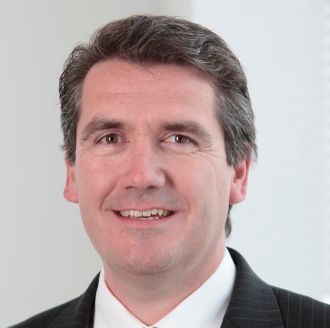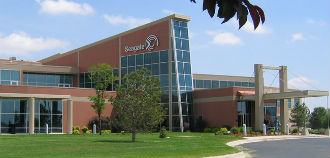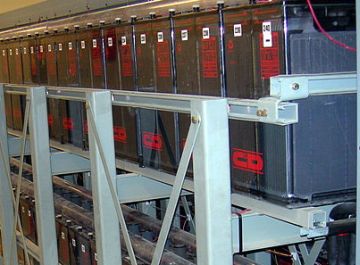 Having delivered a keynote designed to outline Dell’s positive outlook in enterprise to a room full of press and analysts at a remodeled gas-works, the Westergasfabriek, on the edge of an Amsterdam park, Dell EMEA President Aongus Hegarty took some time out of his schedule to speak with ChannelEye, joined by Edmund English, Director, EMEA commercial marketing.
Having delivered a keynote designed to outline Dell’s positive outlook in enterprise to a room full of press and analysts at a remodeled gas-works, the Westergasfabriek, on the edge of an Amsterdam park, Dell EMEA President Aongus Hegarty took some time out of his schedule to speak with ChannelEye, joined by Edmund English, Director, EMEA commercial marketing.
The latter confirmed Dell is actively looking at ARM servers.
As CEO Michael Dell is rumoured to be funding taking the company off the market, with investment from Microsoft, it is hard not to see Dell in a transitional phase. Although Dell holds a strong presence in the enterprise already – the whispers at Tech Camp were about just if and when the company would dump its consumer division.
Hegarty said that from a business perspective, Dell has been going through significant change over the last three years. “We’ve been concentrating on enterprise,” he said. “We are at a significant stage in our transformation, very much linked to our customers deploying technologies”. English added that looking at the company’s market strategy, Dell recognises that there are “a lot of great things that brought us to where we are” and that the firm must not forget about them – and that it is adding capabilities rather than cutting them. It is, English emphasised, an “evolution”.
Channel players in particular will have noted Dell’s product portfolio swelling in hardware and in services, not to mention opening itself up to a partner network rather than dealing directly with the company. “Our company five years ago would have been predominantly direct,” English said. “Five years ago we changed and unlocked choice for our partners – because of that our channel business has grown strongly over a number of years.
“Dell is predominantly a commercial company,” Hegarty added. “About 15 percent in consumer and 85 percent in business to business”. With a lot of work around the enterprise, Dell has been building its portfolio in the full enterprise, including in networking, storage and servers.
It is clear from the company’s shopping spree in the enterprise space that Dell is keen to continue as an established player, adding intellectual property as it goes, including with acquisitions such as Quest, Wyse, Kace, and the others that now form Dell Software Group. “That said,” Hegarty pointed out, “we’ve been continuing to invest in our PCs and tablets” – in line with Windows 8 launching late 2012. It did, however, pull out of its brief flirtation in the smartphone space.
“We have continued to invest in the prosumer as well as the commercial side,” Hegarty said. “You see a lot of trends from the consumer space, features and functionalities, influencing, like in Bring Your Own Device – we are very focused with our commercial customers to enable that choice, to work with security elements and access to data”. For example, with Dell’s Latitude Ultrabook.
Although the Intel logo was plastered on Dell’s Tech Camp banners – a similar blue to Dell’s own logo – English confirmed to ChannelEye that the firm has been actively looking at ARM servers. Efficiencies in power are the talk of the day, and English said that Dell takes its lead from its customers. “That’s what we build into our portfolio,” he said. “We are seeing asks and interest, specifically in the hyperscale space”. That said – there have also been “tremendous” efficiency gains on x86 generation on generation. “We are looking at it, yes – have we done engineering and back end testing? Yes.
“We look at our total cost of ownership,” Hegarty said. “At the end of the day, it is about providing the most efficient technology for our customers”. English added that efficiency can span more than classic power efficiencies: “You’re also talking about staff, driving more automation into backend infrastructures, changing architectures, and thinks like that rather than just keeping the lights on”.
Aside from trends such as tablet usage and mobility in the commercial sector, for SMBs, more should be focusing on social media and the building trends that are happening organically and those that are technology led. “For small businesses,” Hegarty said, “they need to be aware – it’s one of the key mechanisms to connect in business, but also in getting feedback and listening to your customers”. Of ten small businesses Hegarty recently spoke to, at least half of them had no social media strategy or approach adopted in their business.
Considering the soothsaying from influential analyst house Gartner, which said in a recent report that the biggest hitters will have their own in-house social networks, this is an area where businesses cannot afford to be playing catch-up.
For trends in the enterprise, English said that convergence is increasing. “It’s a long time since a customer rang up and asked for a server,” he said. “What they’re looking for is a collaboration service, they want a prescripted solution, the fabric, the storage, the compute, and how you manage and orchestrate that – you’re seeing more conversations happening at a holistic level and an application level”.
Hegarty invited interested channel players to start a conversation with Dell. “What’s exciting for Dell’s channel partners is they’ve seen the portfolio of business expand and grow,” he said. Three or four years ago, partners particularly focused on servers, but the wider portfolio is open for business, and Dell is finding that those partners are investing in other capabilities as well. “Using the enterprise space as one example, the acquisitions that we’ve done – a lot of those companies had been doing business through channel partners, so that’s brought new partners into our network too – Dell uniquely has a full portfolio of technology, end to end, and it creates opportunity for partners.
“The best advice I can give to partners, is come talk to Dell,” Hegarty said.
What does the wider market look like to Dell, right now? Hegarty said that, of course, he couldn’t speak for the rest of the market – but for Dell, it is “very much focused on our customers”. Dell must – and is, Hegarty said – understand customer needs and requirements, as well as trends in the market place, whether it’s in a business environment or at home. The strategy Dell has been developing has been working, according to Hegarty, who cited some slides from Marius Haas earlier in the day – himself an ex HP man, that demonstrated it is “winning in that space”.
As for Dell’s competitors – Marius Haas, formerly a heavy hitter at HP and top ally with ousted chief exec Mark Hurd – led the company’s networking division towards serious success. HP itself has an aggressive channel partner program and is providing subsidies and loans to potential partners as well as buying back rival equipment and end-of-lifing it if it can’t be recycled.
How can Dell respond to such aggression from its top rivals? English told us that primarily, the message in the enterprise is total cost of ownership with storage. “I’m very keen to go and have a five year TCO conversation with anybody versus the competitors,” he said, before acknowledging that Dell had similar “tactical tools” for the channel – including where it buys back terabytes in storage. “But for me that is not going to be a primary vehicle of acquisition, I don’t want to press the price of labor, I want to have a holistic conversation”.
“That really reflects a reaction to the success we’re having with the end to end solutions,” Hegarty said. “I can point to the IDC data globally – we’ve been taking share from HP now six quarters in a role, with the launch of 12g technology. Nothing beats investing in R&D to innovate, and to improve the TCO. Different competitors will react in different, potentially kneejerk ways, to deal with that – but nothing beats innovation”.
 The EMEA server market seems unable to regain its footing. Following several consecutive quarters of lacklustre results, the negative trend seems set to continue, according to the latest IDC figures.
The EMEA server market seems unable to regain its footing. Following several consecutive quarters of lacklustre results, the negative trend seems set to continue, according to the latest IDC figures.














